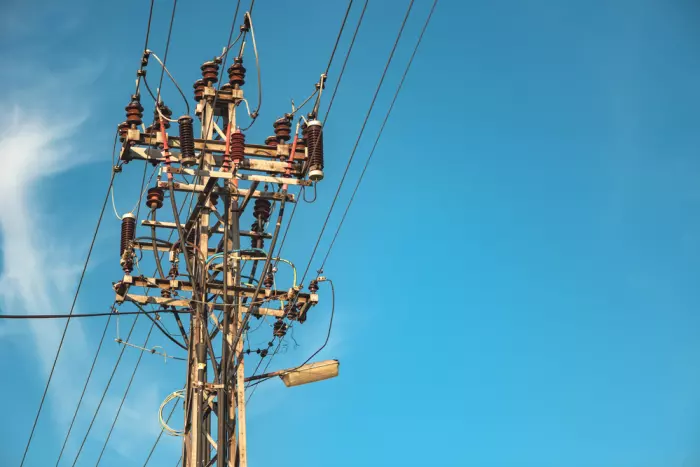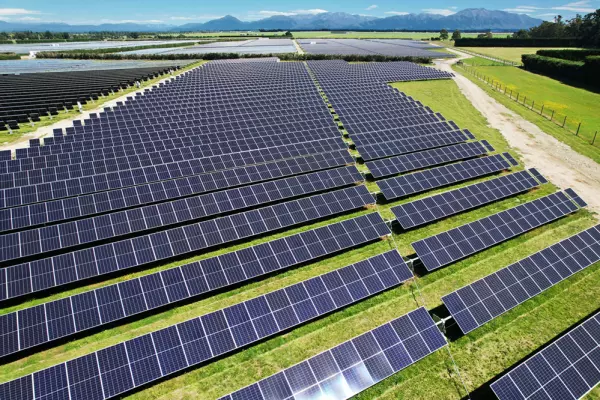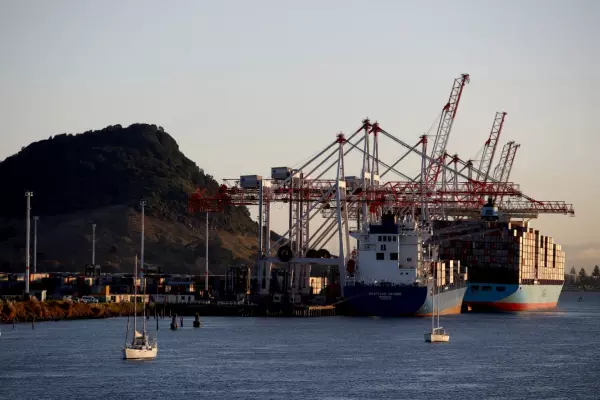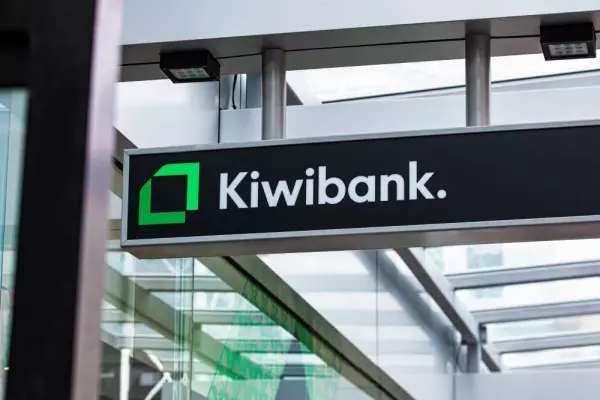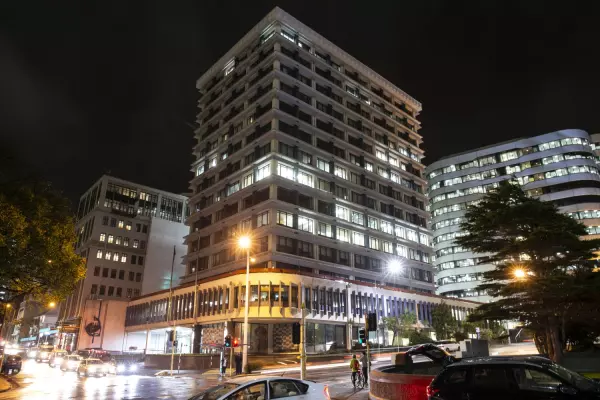Data indicates if it was not for a basic error in allocating scarce electricity, last Monday’s blackouts could have possibly been avoided.
Industry data suggests when the national grid operator Transpower sent out its emergency notices just after 7pm on Aug 9, the allocation amounts were based not on actual demand that evening, but on the average annual consumption throughout the year.
State-owned enterprise Transpower has already apologised for errors in the calculation which they say made the blackouts more widespread than needed, but said the power cuts would have happened anyway due to a lack of generation to meet demand.
However, industry insiders have told BusinessDesk it is possible the blackouts may have been avoided if normal demand control protocols had been applied. Instead the allocations made blackouts inevitable.
The Waikato region experienced some of the most widespread power cuts.
Industry data shows that in the half hour before 7pm, demand through the WEL Network was 276 megawatts (MW). It, like all electricity distribution businesses (EDBs) and power users directly connected to the grid, was initially told to cut demand by 1%.
Transpower then told WEL its allocation was 224.7MW, a 19% cut. WEL has said it questioned Transpower about this, but was told to comply.
The data shows this was repeated across the country.
For instance, Northland's Top Energy had been using 50MW and was told to reduce to 31.9MW, a 36% reduction.
Wellington Electricity’s demand was 578MW. It was allocated 430.7MW, a 25% reduction.
Other allocations far exceeded demand
On the other hand, many EDBs and large power users were allocated more electricity than they were using or needed to meet demand.
For instance, Alpine Energy’s demand was 114MW and it was allocated 151.8MW, a 33% increase, while Buller Electricity was using 4MW and was allocated 7.2MW, an 80% increase.
The largest area of demand was Auckland and the EDB covering the area, Vector, had 1,058MW of demand and was allocated 1,101.1MW, a 4% increase. Vector Northern – covering Auckland’s northern and western suburbs – had demand of 694MW and was allocated 593.3MW, a 15% reduction.
Electricity sector executives told BusinessDesk the calculations suggest the Monday night allocations were based on annual consumption gigawatt hours rather than peak loads.
"Annual consumption is not relevant. On Monday night, decisions should have been based on peak load,” one EDB executive said.
An indication of the size of the mistake was Transpower’s allocation to the Tiwai Point aluminium smelter
Its demand in the half hour up to 7pm on Aug 9 was 572MW, but it was allocated 993.4MW, a 74% increase.
The allocation does not represent the power actually used. For instance, the smelter could not have ramped up production that much. It does have the ability to reduce or increase load by about 10% when asked to do so.
However, the allocation notice to the smelter does give credence to the argument that Transpower made the allocations based on a proportion of its annual consumption: a calculation that gave a meaningless answer to the problem faced on the night.
The graph below shows the demand in the half hour before 7pm on Monday night and the allocation notices made.
The graph and the full table published below shows that EDBs with distributed generation (that is, generating electricity within their networks) faced the biggest decreases. This is because they generate through the year, which offsets their net load.
Also, companies with summer peaks had larger allocations, because their overall high peaks are distributed throughout the year, not just in winter or what they faced last Monday.
Transpower has acknowledged and apologised for the calculation methodology.
Asked for comment on data around the mistake in the allocation process, Transpower GM of operations Stephen Jay said the company acknowledges that the allocations to shed demand were in error and has apologised for it.
“Some networks were asked to shed more than their fair share while we worked to manage a dynamic and rapidly evolving situation to stabilise an overloaded power system.
“We apologise for the added inconvenience and frustration to consumers on a cold night.
“While some networks and their consumers took a larger share of the allocation overall, and we thank them for it, importantly the action taken helped avoid a major failure of the power system.
“There are a number of investigations now underway, including an immediate review by the Electricity Authority of the demand allocation tool and related process used, so consumers can be assured there will not be a repeat if the same situation was to occur again.
“We are cooperating with the authority on this review while also carrying out our own review. At the end of this process, we expect to have a much better understanding of what went on and how to make any improvements necessary."
One lines company executive said questions had to be asked about what led to the allocations.
“The system operator was only concerned with ensuring dispatch to satisfy the peak load in MW for a couple of hours. The annual consumption is not relevant,” the executive said.
“Annual consumption might be used for calculating rolling outages if there was a deficit of fuel, for example water, coal, gas, but annual consumption is not relevant for calculating and limiting peak loads.”
Importantly, Transpower should have realised the net allocations would have increased peak load by 215.9MW if all had been followed through.
This almost certainly did not happen as Transpower says several lines companies queried the allocations and did not follow through with them.
EDBs have also noted the allocations asked them to shed load, while direct connection power users – large industrial plant in the main – were not. Also, the total amount of demand reduction (547MW) was greater than the 1% reduction of the 7,030MWs of demand at the time (about 70MW) originally instructed by Transpower.
Was Black Monday avoidable?
An EDB executive told BusinessDesk it is possible if normal demand-side controls had taken place it was possible power cuts may have been avoided.
However, there were still questions about why the system had got to that point due to a lack of electricity generation being made available.
After the event, Stephen Jay was quoted as saying it was fair to expect electricity to be there for people when they need it most, especially on one of the coldest nights of the winter.
"Unfortunately, there was not enough generation to meet demand. As a result, Transpower had to ask all the local lines companies and large industrial users to reduce demand to help keep the system in balance,'' he said on Tuesday morning.
The Electricity Authority is planning a two-phase review which will also feed into a Ministry of Business, Innovation and Employment-led inquiry.
The first phase will seek immediate assurance any systemic and process issues that led to last Monday’s power cuts are urgently corrected. In particular, the review will be around the system operator’s demand allocation tool and communications.
This part of the review will be completed in two weeks.
Phase two of the review will be wider than the system operator’s role. The scope will be decided after the findings of phase one of the review.
The terms of reference for the authority's review explain its timeline of events, detailed below, which led to four distribution companies disconnecting about 34,350 consumers across the country for up to two hours in mid-winter.
The biggest impact was in the Waikato where more than 17,000 customers were disconnected. Energy minister Megan Woods last week outlined some details of the ministry led review.
She said: "The review will also focus on whether other generation could have been brought online, scheduling and risk margins, and whether there is adequate standby generation or other resources to reduce risk.”
The initial focus in the aftermath of the blackouts was the failure to bring enough generation capacity online. This included whether generators had acted inappropriately, claims they all rejected.
Transpower’s chief executive Alison Andrew has apologised for mistakes which she said led to blackouts being more widespread than necessary.
The timeline according to the Electricity Authority
- On Aug 9 at 6.40am, Transpower, as the system operator, notified market participants that the forecast market schedules were signalling the possibility of a shortage of supply that evening, should conditions worsen.
- By 1pm, the conditions had worsened, and the system operator notified market participants that further generation offers were needed to avert the risk of demand management.
- By 5pm, conditions had deteriorated further, and a Grid Emergency Notice (GEN) was sent notifying market participants that there were insufficient offers to cover both energy and reserve requirements and that reserve dispatch would be reduced to provide energy supply.
- At 6.48pm, all distributors were requested to reduce demand by 1% and notified that a Demand Allocation Notice (DAN) would follow.
- The DAN was issued at 7.09pm but contained a number of errors regarding the maximum demand limits requested of distributors. The errors in the DAN resulted in a number of distributors, who had already disconnected load in response to the 6.48pm request, managing their load further.
- The initial response would have had little impact on consumers, with just ripple control hot water and street lighting disconnection being common mechanisms, but the subsequent response disconnected consumers completely.
- At 8.20pm the original GEN was revised to allow distributors to return up to 5% of their current load levels.
- The Grid Emergency formally ended at 9.01pm.


